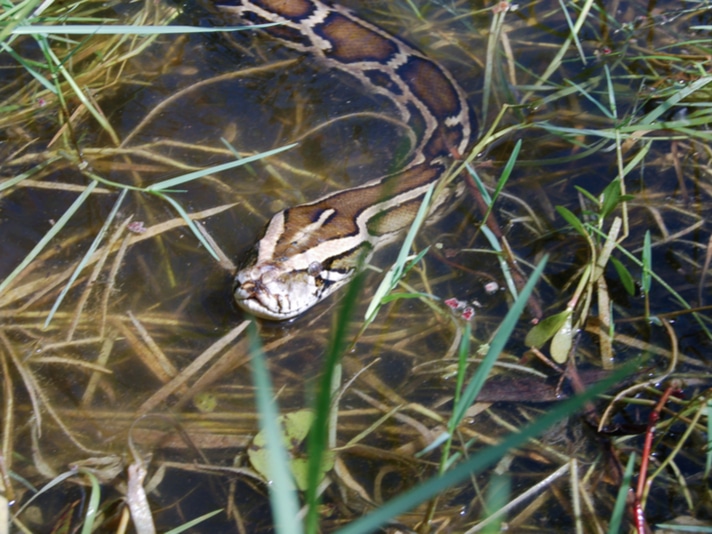The bone digesting cells, called enterocytes are also present in other python species, boa species and the Gila monster.
The intestinal lining cells inside Burmese pythons (Python bivittatus) help the large constricting snake to digest the skeletons of their prey, new research shows. The cells, called enterocytes were analyzed by Dr Jehan-Hervé Lignot, a Professor at the University of Montpellier in France, and his team using light and electron microscopy as well as blood calcium and hormone measurements. The found a new cell type that is comprised of large particles of calcium, phosphorus and iron.
“A morphological analysis of the python epithelium revealed specific particles that I’d never seen in other vertebrates,” Dr. Lignot said in a statement released by the university. These particles were found inside the internal “crypt” of specialized cells that differed from traditional intestinal cells.
Video: Researchers In Florida Record Burmese Python Trying to Eat 77 lb Deer
“Unlike normal absorbing enterocytes, these cells are very narrow, have short microvilli, and have an apical fold that forms a crypt,” Dr Lignot said in statement released to the media. Lignot and his team then analyzed the functionality of the cells by feeding Burmese pythons three different diets: a diet comprised of whole rodents, a loc calcium diet of boneless prey and a calcium rich diet using boneless rodents injected with calcium. When the snakes were fed boneless prey, the calcium and phosphorus rich particles were not produced in the internal crypt. When the diet was changed to the whole rodent or the calcium supplemented boneless rodent, the cells crypt filled with large particles of calcium, phosphorous and iron. The feces of the snakes showed no bone fragments, which confirmed that the bones are dissolved inside the body.
The researchers have identified the bone digesting cell in other reptiles, including other python and boa species, and the Gila monster. The research was presented July 9 at the Society for Experimental Biology Annual Conference in Antwerp, Belgium.
Burmese Python Information
In its natural habitat, the Burmese python can be found in eastern India, Nepal, Western Bhutan, Bangladesh, Myanmar, Thailand, Laos, Cambodia, Vietnam Malaysia southern China, Hong Kong, and Indonesia. It inhabits marshes, swamps, foothills, woodlands, jungles, and grasslands. In the United States, the snake is confined to southern Florida, primarily in the Florida Everglades, though one was found in northern Florida as well as the Florida panhandle’s coastal areas. It has not been found outside the state of Florida.



